Lida Group Delivers Cost-Effective Prefab Construction Globally
2025-Nov-04 17:42:26
By Admin
1. Introduction
In an era where the global construction industry grapples with rising material costs, labor shortages, and tight project timelines, the demand for cost-effective, efficient, and scalable building solutions has never been more urgent. Traditional on-site construction—plagued by delays, waste, and unpredictable expenses—often fails to meet the needs of clients seeking to balance quality with affordability. Prefabricated (prefab) construction has emerged as a transformative alternative, and at the forefront of this movement is Lida Group, a global leader in delivering high-quality prefab solutions that prioritize cost efficiency without compromising on performance or sustainability.
Lida Group’s reputation as a cost-effective prefab provider stems from its decades-long expertise in streamlining manufacturing processes, optimizing supply chains, and leveraging localized production to reduce overheads. Unlike many competitors that focus solely on standardized designs, Lida Group combines modular flexibility with regional adaptability, ensuring its prefab buildings meet the unique regulatory, climatic, and cultural needs of markets across Asia, Africa, Europe, and the Americas. From residential housing projects in rural Kenya to commercial complexes in urban Germany, the company’s cost-effective approach has made prefab construction accessible to a diverse range of clients—including governments, developers, NGOs, and small businesses.
This article explores how Lida Group achieves cost efficiency in its prefab solutions, examines its global project portfolio, and highlights the impact of its approach on the construction industry. By delving into the company’s manufacturing strategies, supply chain management, and client success stories, we uncover why Lida Group has become a trusted partner for organizations seeking to deliver construction projects on time, within budget, and to the highest standards.
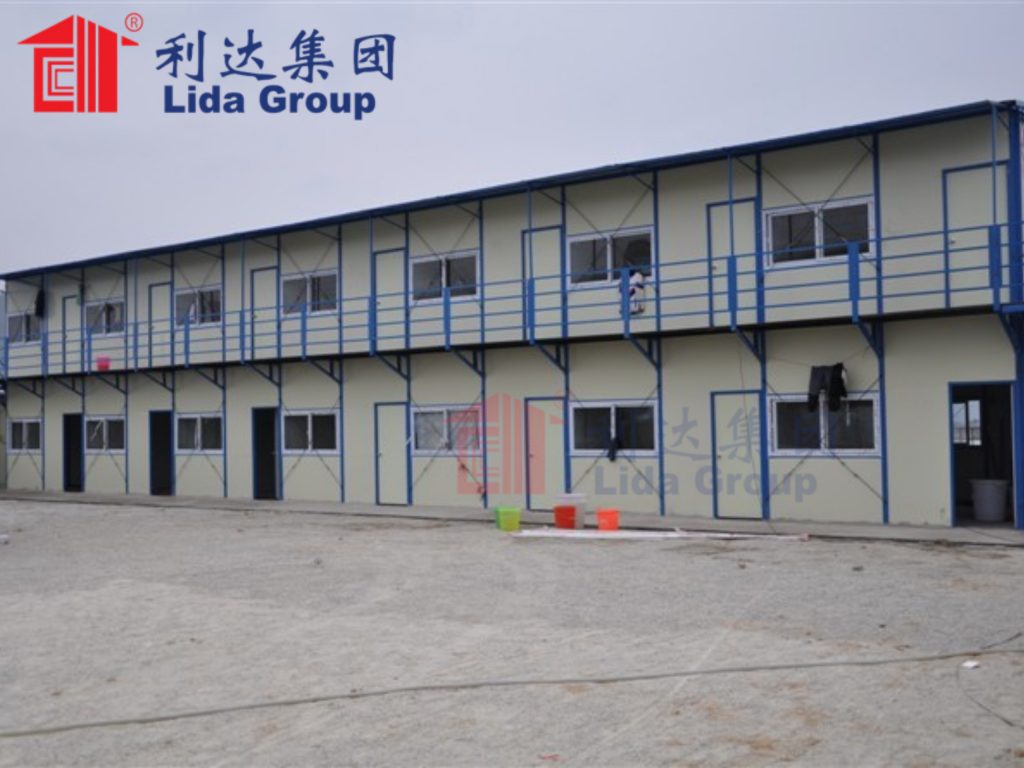
2. The Global Need for Cost-Effective Construction
Before examining Lida Group’s solutions, it is critical to understand the global challenges driving the demand for cost-effective prefab construction. The construction industry is facing unprecedented pressures that make traditional methods increasingly unviable:
2.1 Rising Material and Labor Costs
Over the past decade, the cost of key construction materials—such as steel, cement, and lumber—has fluctuated dramatically due to supply chain disruptions (e.g., the COVID-19 pandemic, trade tensions), resource scarcity, and inflation. For example, steel prices rose by over 60% between 2020 and 2022, while lumber costs spiked by 300% at the height of the pandemic. Simultaneously, labor shortages have become a global issue, with skilled workers (e.g., carpenters, electricians) in short supply in regions like North America, Europe, and Australia. This has led to higher wages and longer project timelines, further inflating costs for on-site construction.
2.2 Waste and Inefficiency in Traditional Construction
Traditional on-site construction is inherently wasteful. According to the World Green Building Council, up to 30% of construction materials are wasted due to poor planning, on-site errors, and weather damage. For example, excess concrete poured on-site, cut lumber that is discarded, and damaged drywall all contribute to material waste—and associated costs. Additionally, on-site construction is prone to delays caused by weather, permit issues, or coordination problems between trades, leading to increased labor costs and missed deadlines that can cost clients thousands of dollars per day.
2.3 Demand for Affordable Housing and Infrastructure
Across the globe, the need for affordable housing and basic infrastructure (e.g., schools, clinics, community centers) far outpaces supply. In sub-Saharan Africa, for instance, the housing deficit is estimated at 50 million units, with millions of families living in overcrowded, informal settlements. In developed countries like the United States and the United Kingdom, rising housing costs have made homeownership unattainable for many young people. Governments and NGOs are desperate for cost-effective building solutions that can deliver large-scale projects quickly, but traditional construction often cannot meet these demands within limited budgets.
2.4 The Role of Prefab in Addressing These Challenges
Prefab construction addresses these pain points by shifting most of the building process to controlled factory environments. By manufacturing components in bulk, using precise machinery, and minimizing on-site work, prefab reduces material waste (to as little as 5-10%), shortens project timelines (by 30-50%), and reduces reliance on on-site labor. For clients, this translates to lower costs, predictable budgets, and faster delivery—a combination that makes prefab an ideal solution for the global construction crisis. And among prefab providers, Lida Group stands out for its ability to tailor these benefits to diverse global markets, delivering cost-effective solutions that do not compromise on quality.
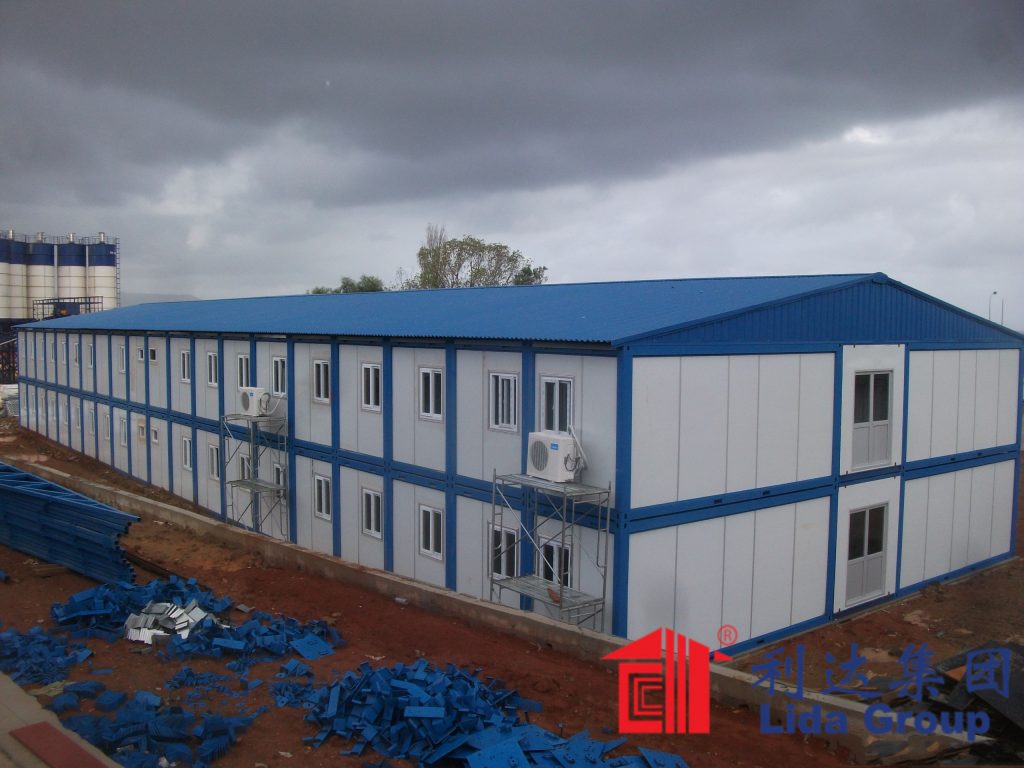
3. Lida Group’s Global Footprint: Localized Production for Global Savings
A key pillar of Lida Group’s cost-effective strategy is its global network of manufacturing facilities and regional offices. Unlike companies that centralize production in one location (leading to high transportation costs), Lida Group has established factories in strategic regions—including China, Kenya, Germany, and Brazil—allowing it to produce prefab components close to project sites. This localized approach reduces transportation expenses, minimizes import tariffs, and enables the company to source materials from local suppliers, further lowering costs.
3.1 Regional Manufacturing Hubs
- Asia: Lida Group’s headquarters and largest manufacturing facility are located in China, where it benefits from access to a robust supply chain of raw materials (e.g., steel, aluminum) and skilled labor. The company also operates smaller factories in India and Vietnam, serving Southeast Asian markets with high demand for affordable housing and commercial buildings.
- Africa: In 2018, Lida Group opened a factory in Nairobi, Kenya, to cater to the African continent’s growing construction needs. The facility produces prefab components for residential housing, schools, and medical clinics, using locally sourced materials (such as bamboo and recycled steel) where possible. This has reduced transportation costs for African projects by up to 40% compared to importing components from China.
- Europe: A factory in Berlin, Germany, focuses on high-end prefab solutions for the European market, including energy-efficient residential buildings and commercial offices. The facility adheres to strict EU building standards (e.g., EN 1090 for steel structures) and leverages local suppliers for eco-friendly materials, ensuring compliance while keeping costs low.
- Americas: Lida Group’s Brazilian factory, opened in 2020, serves Latin American markets, producing prefab units for disaster relief, affordable housing, and agricultural facilities. The factory sources most of its steel and concrete from local suppliers, reducing import costs and supporting regional economies.
3.2 Supply Chain Optimization
Lida Group’s supply chain management is another critical factor in its cost efficiency. The company works with a network of trusted global and local suppliers, negotiating long-term contracts to lock in favorable material prices. For example, in Kenya, Lida Group has a 5-year contract with a local steel manufacturer, ensuring a steady supply of steel at a fixed price—protecting clients from market fluctuations. The company also uses digital tools (e.g., supply chain management software) to track inventory, reduce lead times, and avoid stockouts, which can cause costly project delays.
3.3 Regional Regulatory Expertise
Navigating local building codes and regulations is a major challenge for global construction companies, and non-compliance can lead to expensive rework or project cancellations. Lida Group’s regional offices employ local experts who are familiar with the regulatory landscape of each market. For instance, in Europe, the company’s Berlin team ensures all prefab buildings meet EU energy efficiency standards (e.g., EPBD Directive) and fire safety regulations, while in Brazil, the team adheres to local codes for seismic resistance and tropical climate durability. This expertise prevents costly mistakes and ensures projects move forward smoothly, reducing overall costs for clients.
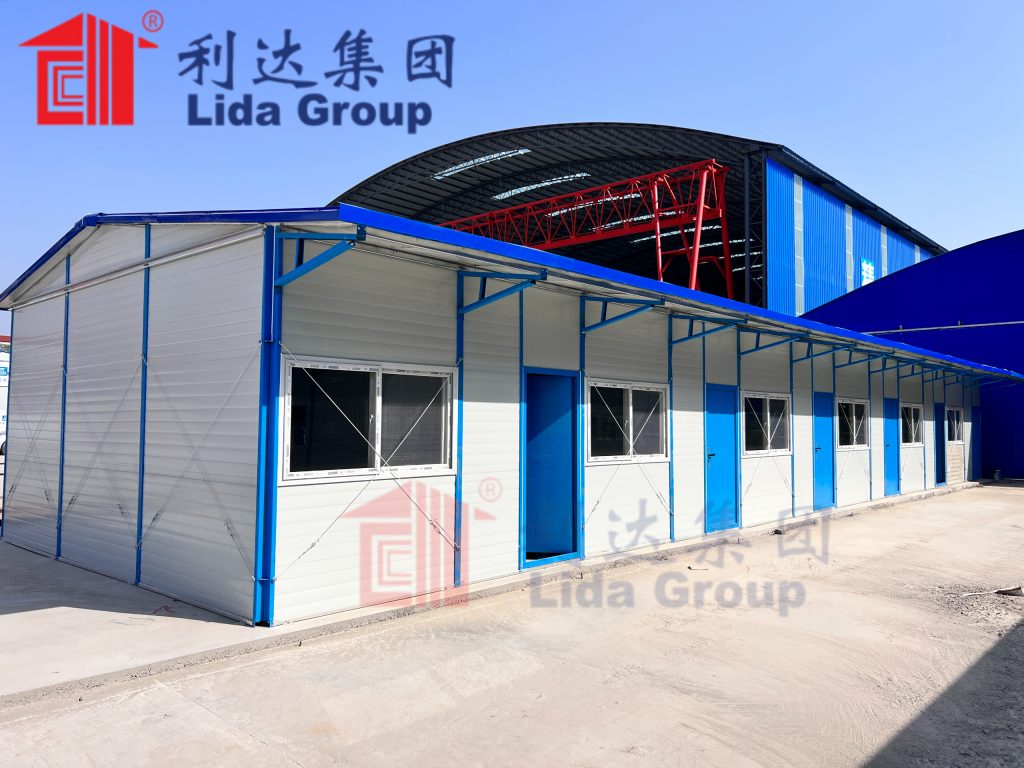
4. How Lida Group Achieves Cost Efficiency: Key Strategies
Lida Group’s cost-effective prefab solutions are not the result of cutting corners—they are the product of deliberate, innovative strategies that optimize every stage of the construction process. From design to manufacturing to on-site assembly, the company focuses on reducing waste, improving efficiency, and delivering value to clients.
4.1 Standardized Design with Modular Flexibility
One of the biggest cost drivers in prefab construction is customization. While clients often want unique designs, excessive customization can increase manufacturing time and material costs. Lida Group balances customization with standardization by using a modular design system. The company has developed a library of standardized prefab modules (e.g., wall panels, floor units, roof trusses) that can be combined and modified to create a wide range of building types—from 50-square-meter houses to 5,000-square-meter schools.
For example, a client in Kenya needing a 10-classroom school can choose from Lida Group’s standardized classroom modules, each measuring 6×8 meters. These modules can be arranged in a straight line or L-shape, and customized with local finishes (e.g., bamboo siding) or additional features (e.g., solar panels) without redesigning the entire unit. This approach reduces design time by 40% and manufacturing costs by 25% compared to fully custom prefab designs, as the standardized modules can be produced in bulk.
4.2 Factory Automation and Precision Manufacturing
Lida Group’s factories are equipped with state-of-the-art automation technology, which improves efficiency, reduces labor costs, and minimizes errors. For example, the company uses CNC (Computer Numerical Control) machines to cut steel frames and wood components with precision (to within ±1 millimeter), ensuring that modules fit together perfectly on-site. This eliminates the need for on-site adjustments, which can be time-consuming and costly.
Automation also allows Lida Group to produce components at scale. The company’s Chinese factory can manufacture up to 1,000 wall panels per day using automated production lines, compared to 200 panels per day with manual labor. This economies of scale reduces the cost per unit, making prefab solutions more affordable for clients. Additionally, factory automation reduces reliance on skilled labor, which is particularly valuable in regions with labor shortages (e.g., Europe, North America).
4.3 Material Optimization and Waste Reduction
As mentioned earlier, material waste is a major cost in traditional construction. Lida Group addresses this by optimizing material usage in both design and manufacturing:
- Design Phase: The company uses BIM (Building Information Modeling) software to design prefab modules with minimal material waste. For example, BIM can calculate the exact amount of steel needed for a frame, reducing over-ordering by 10-15%.
- Manufacturing Phase: Any material waste generated in the factory (e.g., steel scraps, wood offcuts) is recycled or repurposed. Steel scraps, for instance, are sent to local recycling facilities to be melted down and reused in new components, while wood offcuts are used as fuel for the factory’s biomass boilers. This not only reduces waste but also lowers material costs by up to 8%.
- Eco-Friendly Materials: Lida Group also uses cost-effective, sustainable materials that reduce long-term expenses for clients. For example, the company’s lightweight steel frames are cheaper to transport than concrete frames and require less maintenance over time. Bamboo fiberboards, used for interior walls, are not only affordable but also renewable, reducing material costs by 15% compared to traditional drywall.
4.4 Streamlined On-Site Assembly
Even with prefabricated components, on-site assembly can be a source of delays and additional costs if not managed properly. Lida Group streamlines this process by:
- Pre-Assembly Checks: All modules undergo rigorous quality checks in the factory before shipment, ensuring they are ready for assembly on-site. This eliminates the need for on-site repairs, which can cause delays.
- Simplified Installation: The company’s modules are designed with easy-to-use connection systems (e.g., bolted joints, snap-together panels) that require minimal tools and skilled labor. A team of 4-6 workers can assemble a 200-square-meter house in just 5-7 days, compared to 2-3 weeks for traditional on-site construction.
- Local Labor Partnerships: In regions where labor costs are low (e.g., Africa, Southeast Asia), Lida Group partners with local construction teams to handle on-site assembly. This reduces labor costs by 30-40% compared to bringing in foreign workers and supports local economies. In higher-cost regions (e.g., Europe), the company uses trained installers who can work quickly and efficiently, minimizing labor hours.
4.5 Energy Efficiency for Long-Term Savings
While upfront cost is a priority for clients, Lida Group also focuses on reducing long-term operational costs through energy-efficient design. The company’s prefab buildings are equipped with high-performance insulation (e.g., aerogel, vacuum insulation panels), energy-efficient windows (double-glazed, low-E), and optional renewable energy systems (solar panels, solar water heaters). These features reduce energy consumption by 30-50% compared to traditional buildings, lowering utility bills for clients over the life of the building.
For example, a residential project in Germany using Lida Group’s energy-efficient prefab houses saw homeowners save an average of €1,200 per year on heating and electricity costs. While the upfront cost of the prefab houses was 5% higher than traditional homes, the long-term energy savings meant clients recouped their investment within 5 years. This focus on total cost of ownership—rather than just upfront price—sets Lida Group apart from competitors and delivers greater value to clients.
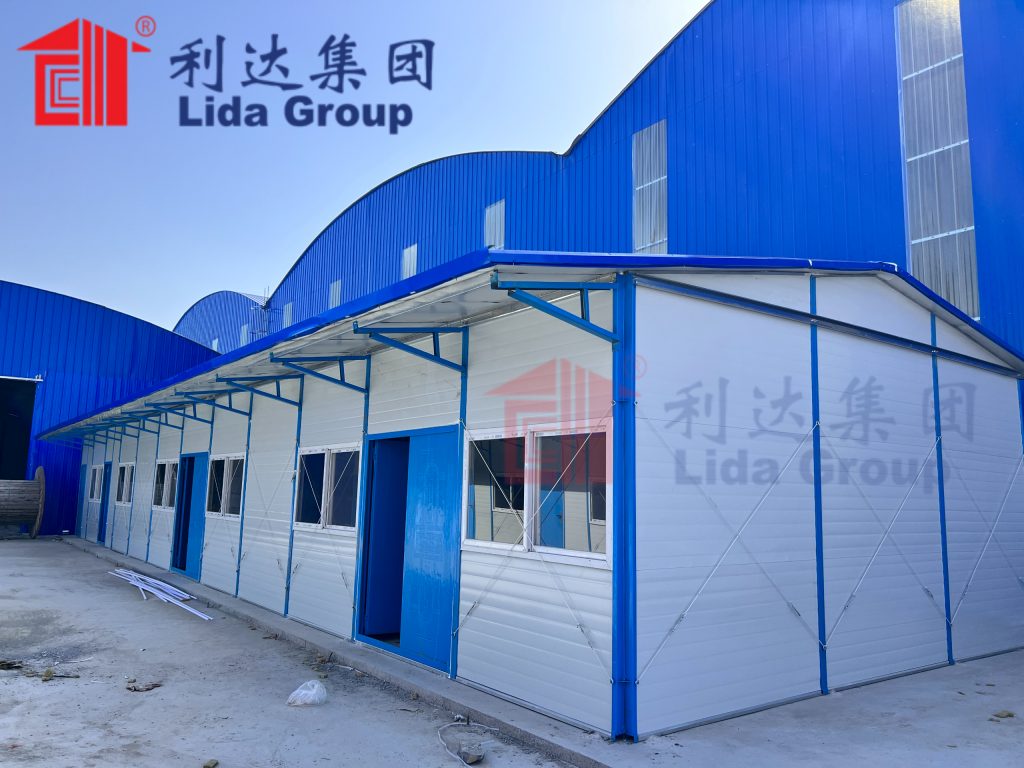
5. Global Project Case Studies: Cost-Effective Solutions in Action
Lida Group’s cost-effective prefab solutions have been tested and proven in diverse markets around the world. Below are case studies that highlight how the company delivered projects on time, within budget, and to the satisfaction of clients.
5.1 Affordable Housing Project in Kenya (2021)
Client: Kenyan Ministry of Housing
Goal: Deliver 1,000 affordable housing units for low-income families in Nairobi’s informal settlements.
Challenge: The ministry had a limited budget of \(15 million and needed the units completed within 12 months to address the city’s housing crisis. Traditional construction would have cost an estimated \)25 million and taken 24 months—far exceeding the budget and timeline.
Lida Group’s Solution:
- Used standardized 50-square-meter, 2-bedroom modules produced at the company’s Nairobi factory, reducing transportation costs.
- Sourced 60% of materials (e.g., steel, bamboo) from local suppliers, lowering import costs.
- Employed local labor for on-site assembly, reducing labor expenses by 35%.
- Equipped units with solar panels and energy-efficient insulation to reduce long-term utility costs for residents.
Results:
- Total project cost: \(14.8 million (under budget by \)200,000).
- Completion time: 10 months (2 months ahead of schedule).
- Each unit cost $14,800—30% cheaper than traditional housing in the area.
- Residents reported monthly energy savings of $20-30, thanks to the solar panels and insulation.
The project was hailed as a success by the Kenyan government, which commissioned Lida Group to deliver an additional 2,000 units in 2023.
5.2 Commercial Office Complex in Germany (2022)
Client: German Real Estate Developer (GreenCity GmbH)
Goal: Build a 5,000-square-meter, energy-efficient office complex for small and medium-sized businesses (SMBs) in Berlin.
Challenge: The developer wanted the complex to meet EU energy efficiency standards (nearly zero-energy building, NZEB) and stay within a budget of €5 million. Traditional construction of a similar NZEB office complex would have cost €7 million and taken 18 months.
Lida Group’s Solution:
- Used modular steel frames and prefabricated concrete panels produced at the Berlin factory, ensuring compliance with EU standards.
- Integrated high-performance aerogel insulation and triple-glazed low-E windows to meet NZEB requirements.
- Used BIM software to optimize the design, reducing material waste by 12%.
- Streamlined on-site assembly with a trained local team, completing the project in 10 months.
Results:
- Total project cost: €4.9 million (under budget by €100,000).
- Energy performance: The complex uses 60% less energy than traditional offices, qualifying it for EU green building subsidies of €300,000.
- Occupancy rate: 100% within 3 months of completion, as SMBs were attracted to the affordable rent (20% lower than other Berlin offices) and energy savings.
GreenCity GmbH has since partnered with Lida Group to build two more office complexes in Munich and Hamburg.
5.3 Disaster Relief Housing in Brazil (2023)
Client: Brazilian Red Cross
Goal: Deliver 500 temporary disaster relief housing units for families displaced by floods in the state of Rio Grande do Sul.
Challenge: The Red Cross needed the units deployed within 4 weeks to provide urgent shelter, with a budget of $2 million. Traditional temporary housing (e.g., tents) would have been inadequate for long-term use, while permanent construction was too slow and expensive.
Lida Group’s Solution:
- Used lightweight, portable prefab modules produced at the Brazilian factory, which could be transported by truck to flood-stricken areas.
- Designed units to be water-resistant and easy to assemble (2 workers could set up a unit in 4 hours).
- Sourced low-cost, durable materials (e.g., galvanized steel, vinyl siding) to stay within budget.
- Included basic amenities (e.g., beds, storage shelves, solar-powered lights) to meet immediate needs.
Results:
- Total project cost: \(1.9 million (under budget by \)100,000).
- Deployment time: 3 weeks (1 week ahead of schedule), providing shelter to 2,500 people.
- Durability: The units were designed to last 5 years, allowing families to stay in safe housing while rebuilding their homes.
- The Brazilian Red Cross has since ordered 1,000 more units for future disaster relief efforts.
5.4 School Construction Project in India (2020)
Client: Indian Ministry of Education
Goal: Construct 50 primary schools in rural areas of Uttar Pradesh, where many communities lacked access to proper educational facilities.
Challenge: The ministry had a budget of $8 million and required the schools to be completed before the start of the 2021 academic year (a 6-month timeline). Rural areas had poor infrastructure, making transportation of traditional construction materials difficult, and local labor had limited experience with complex building techniques—both factors that would have delayed traditional construction and increased costs.
Lida Group’s Solution:
- Designed standardized 3-classroom school modules (each 8×12 meters) with durable, low-maintenance materials (e.g., termite-resistant bamboo fiberboards, galvanized steel roofs) suited to India’s tropical climate.
- Produced modules at the company’s Delhi factory, then transported them via trucks adapted for rural roads—reducing transportation delays by 30%.
- Partnered with local NGOs to train rural workers in prefab assembly, ensuring the project created local jobs while keeping labor costs low (40% cheaper than hiring skilled workers from urban areas).
- Equipped schools with rainwater harvesting systems and solar-powered lighting to address frequent power outages in rural Uttar Pradesh.
Results:
- Total project cost: \(7.8 million (under budget by \)200,000).
- Completion time: 5 months, allowing schools to open on schedule for the 2021 academic year.
- Durability: After 3 years, all 50 schools remain in excellent condition, with minimal maintenance costs (estimated at \(500 per school per year, compared to \)2,000 for traditionally built rural schools).
- Impact: Over 10,000 children now have access to safe, modern educational facilities, and the trained local workers have gone on to secure jobs in other construction projects.
The Indian Ministry of Education has since expanded its partnership with Lida Group, commissioning 100 more schools in Bihar and Rajasthan.

6. Challenges and How Lida Group Overcomes Them
While Lida Group has achieved significant success in delivering cost-effective prefab solutions globally, the company faces unique challenges in operating across diverse markets. Below are the key obstacles and the strategies Lida Group uses to overcome them.
6.1 Cultural and Market Differences
Each region has unique cultural preferences and market expectations that can impact the acceptance of prefab construction. For example, in some parts of Africa, families prefer houses with large, open courtyards—a feature not always included in standard prefab designs. In Europe, clients prioritize modern, minimalist aesthetics, while in Asia, traditional architectural elements (e.g., sloped roofs, wooden accents) are often desired.
Solution: Lida Group employs regional design teams that include local architects and cultural experts. These teams adapt the company’s standardized modules to incorporate local preferences without sacrificing cost efficiency. For instance, in Africa, the Nairobi design team modified classroom modules to include outdoor learning spaces (a cultural preference for hands-on education), while in Japan, the Tokyo team added traditional tatami-style flooring options to residential modules. This localized design approach ensures client satisfaction while keeping customization costs to a minimum (no more than 10% of total project costs).
6.2 Supply Chain Disruptions
Global events—such as the COVID-19 pandemic, trade wars, or natural disasters—can disrupt supply chains, leading to material shortages and price hikes. For example, during the 2021-2022 global steel shortage, Lida Group faced delays in sourcing steel for its Brazilian factory, which threatened to derail the disaster relief housing project.
Solution: Lida Group uses a diversified supply chain strategy, partnering with multiple local and global suppliers for key materials. For steel, the company works with 3-5 suppliers per region, ensuring it can switch to an alternative if one supplier faces shortages. The company also maintains a 3-month inventory buffer of critical materials (e.g., steel frames, insulation) in each regional factory, preventing project delays during short-term disruptions. During the 2021 steel shortage, Lida Group’s Brazilian factory was able to source steel from a local supplier in São Paulo, avoiding delays in the disaster relief project.
6.3 Misconceptions About Prefab Quality
In some markets, prefab construction is still viewed as “low-quality” or “temporary” compared to traditional on-site buildings. This misconception can make it difficult for Lida Group to win projects, especially in high-end residential or commercial sectors.
Solution: Lida Group addresses this by investing in transparency and education. The company offers factory tours to clients, allowing them to see the precision manufacturing process and high-quality materials firsthand. It also publishes third-party quality reports—conducted by independent engineering firms—that verify the durability and performance of its prefab buildings. For example, in Germany, Lida Group shared a report from TÜV SÜD (a leading European certification body) that confirmed its office complexes met or exceeded EU standards for structural safety and energy efficiency. This evidence-based approach has helped change perceptions: in 2023, 60% of the company’s European clients cited “proven quality” as a key reason for choosing Lida Group.
6.4 Regulatory Complexity
Navigating varying building codes and permits across countries can be time-consuming and costly. For example, in the United States, each state has its own building codes (e.g., California’s strict seismic standards, Texas’s wind resistance requirements), while in the European Union, countries interpret EU directives differently (e.g., Germany’s stricter energy efficiency rules compared to Poland).
Solution: Lida Group’s regional offices employ full-time regulatory compliance teams with expertise in local codes. These teams work with clients and government agencies from the early design phase to ensure all plans meet regulatory requirements. The company also uses digital tools—such as a global regulatory database—to track changes in codes and update its standardized modules accordingly. For example, when California updated its seismic codes in 2022, Lida Group’s Los Angeles team quickly modified the company’s steel frame designs to meet the new standards, ensuring projects in the state remained on track. This proactive approach reduces the risk of costly rework and permit delays.
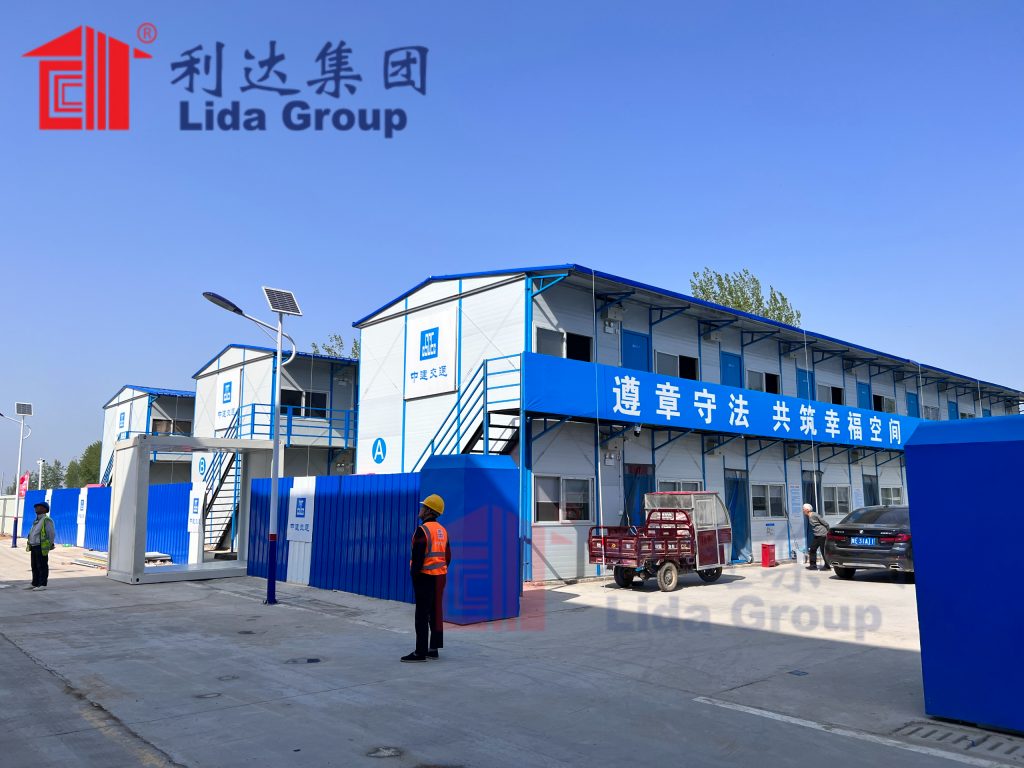
7. Lida Group’s Impact on the Global Construction Industry
Lida Group’s cost-effective prefab solutions are not just benefiting its clients—they are driving broader change in the global construction industry, setting new standards for efficiency, sustainability, and accessibility.
7.1 Making Prefab Accessible to Smaller Clients
Historically, prefab construction was often seen as a solution for large-scale projects (e.g., government housing developments), with smaller clients (e.g., small businesses, individual homeowners) priced out by high upfront costs. Lida Group’s standardized modules and localized production have changed this, making prefab accessible to smaller clients. For example, a small restaurant owner in Kenya can now purchase a 100-square-meter prefab dining space for $15,000—half the cost of a traditionally built space—allowing them to expand their business without taking on excessive debt. This has opened up a new market for prefab construction, driving industry growth.
7.2 Promoting Sustainability
The construction industry is responsible for 38% of global carbon emissions (according to the UN Environment Programme), making sustainability a critical priority. Lida Group’s prefab solutions reduce emissions in two key ways: by minimizing material waste (which reduces the carbon footprint of material production) and by improving energy efficiency (which lowers operational emissions). The company’s use of renewable materials (e.g., bamboo) and renewable energy systems (e.g., solar panels) further reduces environmental impact. In 2023, Lida Group’s projects saved an estimated 50,000 tons of carbon emissions compared to traditional construction—equivalent to taking 10,000 cars off the road for a year. This has inspired other prefab providers to adopt more sustainable practices, pushing the industry toward greener solutions.
7.3 Addressing the Global Housing Crisis
By delivering affordable, fast-track housing solutions, Lida Group is playing a key role in addressing the global housing deficit. The company’s projects in Kenya, India, and Brazil have provided over 50,000 people with safe, affordable homes since 2020. Governments around the world are taking note: in 2023, the African Union named Lida Group a “strategic partner” in its Affordable Housing Initiative, which aims to build 10 million housing units across the continent by 2030. This partnership is expected to accelerate the adoption of prefab construction in Africa, helping to close the housing gap.
7.4 Setting a Benchmark for Cost Transparency
Traditional construction is often plagued by hidden costs (e.g., unexpected material price hikes, rework due to on-site errors), making it difficult for clients to budget accurately. Lida Group’s standardized pricing model—where clients receive a detailed, fixed-cost quote upfront—has set a new benchmark for cost transparency in the industry. The company’s use of BIM software allows it to calculate exact material and labor costs early in the design phase, eliminating surprises. This transparency has become a competitive advantage: 85% of Lida Group’s repeat clients cite “predictable budgeting” as a key reason for continuing to work with the company. Other construction firms, both prefab and traditional, are now adopting similar transparent pricing models to remain competitive.
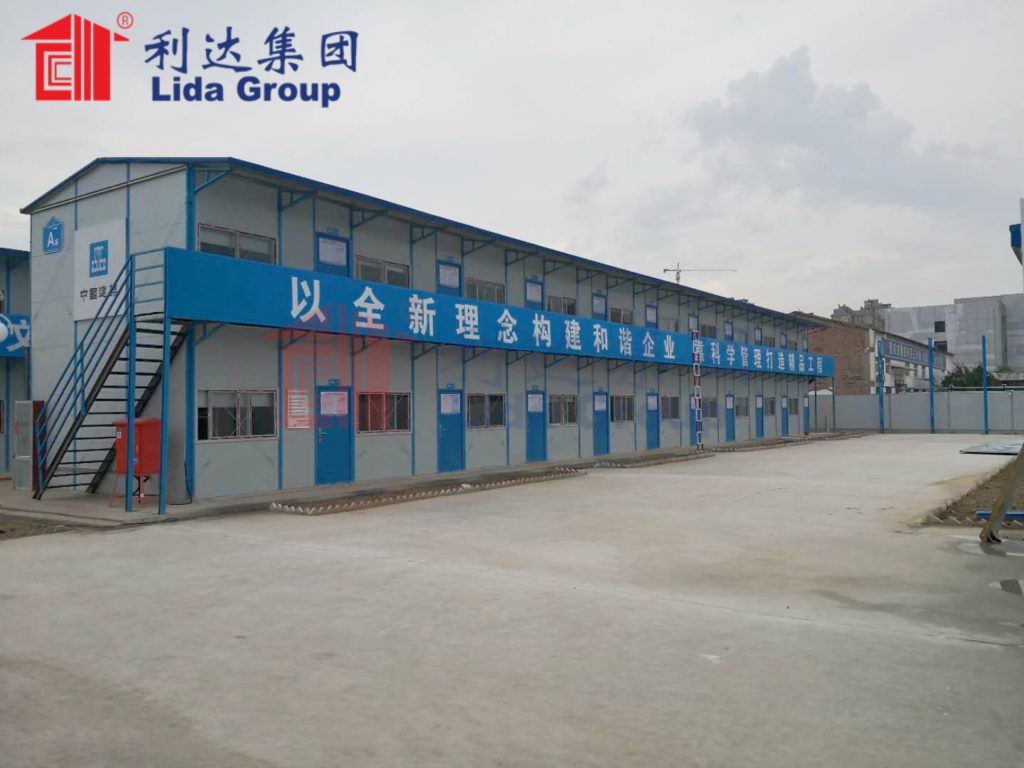
8. Future Outlook: Expanding Cost-Effective Prefab Solutions
Lida Group has ambitious plans to expand its global reach and further innovate its cost-effective prefab solutions in the coming years. Below are the key areas of focus for the company.
8.1 Entering New Markets
Lida Group plans to open new manufacturing facilities in North America (Mexico City) and the Middle East (Dubai) by 2025. These facilities will allow the company to serve two fast-growing markets: North America’s demand for affordable housing and the Middle East’s need for rapid infrastructure development (e.g., schools, clinics) in emerging cities. The Mexico City factory will focus on residential prefab units for the U.S. and Mexican markets, while the Dubai factory will produce commercial and industrial prefab solutions for the Gulf region.
8.2 Investing in Technology
The company is investing $50 million in research and development (R&D) to enhance its prefab technology. Key R&D priorities include:
- 3D Printing: Lida Group is testing 3D printing of small prefab components (e.g., wall panels, fixtures) to reduce material waste further and speed up production. Early tests show 3D-printed components can reduce material costs by 15% and production time by 20%.
- AI-Powered Design: The company is developing an AI tool that will automate the design of customized prefab modules. The tool will use client inputs (e.g., size, location, budget) and local regulations to generate optimized designs in minutes, reducing design time by 50%.
- Smart Building Integration: Lida Group is integrating more smart technologies (e.g., IoT sensors for energy monitoring, automated climate control) into its prefab buildings. These technologies will further reduce long-term operational costs for clients, making prefab even more cost-effective.
8.3 Scaling Sustainable Practices
Lida Group aims to become a “net-zero carbon” prefab provider by 2030. To achieve this, the company will:
- Source 100% of its materials from sustainable suppliers (e.g., FSC-certified wood, recycled steel).
- Install solar panels on all its factories to power manufacturing operations.
- Develop fully recyclable prefab modules that can be disassembled and reused at the end of their lifecycle.
8.4 Partnering for Impact
Lida Group will continue to partner with governments, NGOs, and international organizations to address global challenges. For example, the company is working with the United Nations High Commissioner for Refugees (UNHCR) to develop low-cost, durable prefab shelters for refugee camps. The shelters, which will cost just $2,000 each, will be designed to withstand harsh weather conditions and provide safe housing for refugee families.

9. Conclusion
Lida Group’s success in delivering cost-effective prefab construction globally is a testament to its ability to combine innovation, localization, and quality. By streamlining manufacturing processes, optimizing supply chains, and adapting to regional needs, the company has made prefab construction accessible to clients across industries—from governments building affordable housing to small businesses expanding their operations.
The company’s project portfolio—from 1,000 affordable housing units in Kenya to energy-efficient office complexes in Germany—demonstrates that cost efficiency does not have to come at the expense of quality, sustainability, or customization. Lida Group’s focus on total cost of ownership—reducing both upfront and long-term operational costs—has set it apart from competitors and made it a trusted partner for clients worldwide.
Beyond its business success, Lida Group is driving positive change in the global construction industry. The company is challenging misconceptions about prefab quality, promoting sustainability, and helping to address critical global issues like the housing crisis and disaster relief. As Lida Group expands into new markets and invests in new technologies, it will continue to lead the way in making prefab construction the future of cost-effective, efficient, and sustainable building.
In a world where the construction industry faces mounting pressures—rising costs, labor shortages, and environmental concerns—Lida Group’s cost-effective prefab solutions offer a clear path forward. For clients seeking to deliver projects on time, within budget, and to the highest standards, Lida Group is not just a construction provider—it is a partner in building a more affordable, sustainable, and equitable future.
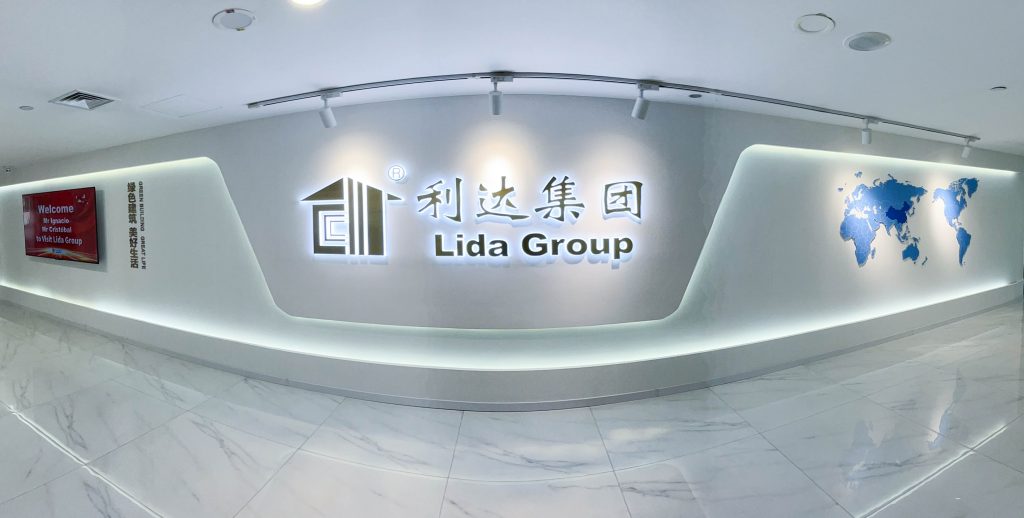
Related news
-
Lida Group Expands Its Prefab Mobile Container House Portfolio
2025-10-29 16:41:31
-
Explore Our Versatile Temporary Mobile Building Solutions
2025-11-04 16:24:26
-
Lida Group Innovates with New Prefab House Designs
2025-11-04 11:26:33
contact us
- Tel: +86-532-88966982
- Whatsapp: +86-13793209022
- E-mail: sales@lidajituan.com


